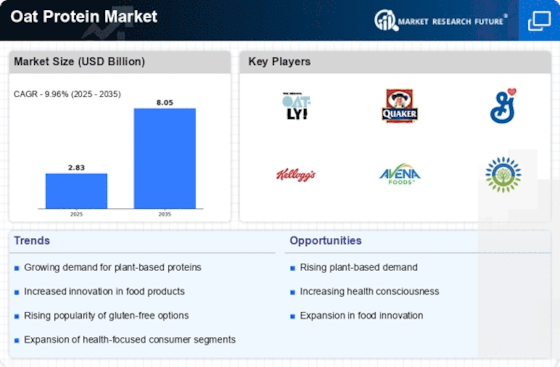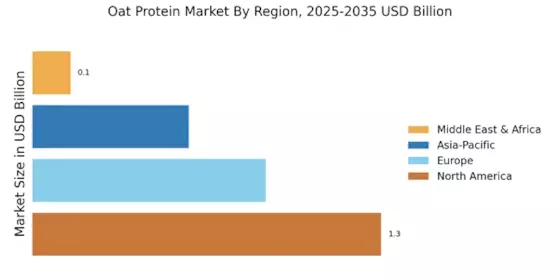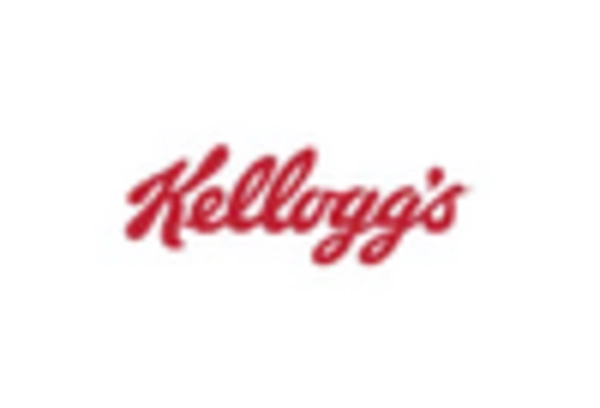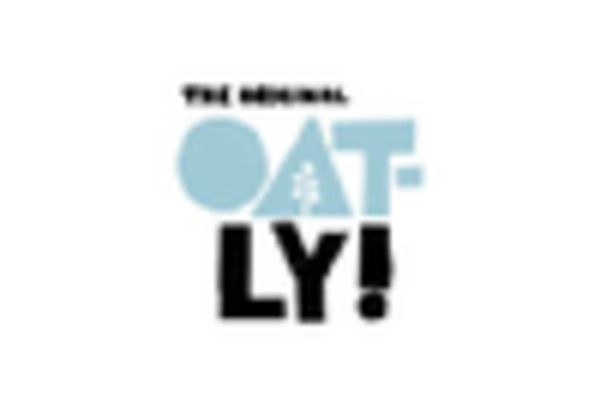Sustainability Trends
Sustainability has emerged as a crucial factor influencing consumer choices, thereby impacting the Oat Protein Market. The environmental benefits associated with oat cultivation, such as lower water usage and reduced greenhouse gas emissions compared to animal-based protein sources, resonate with eco-conscious consumers. As the demand for sustainable food options continues to grow, oat protein is positioned favorably. Reports indicate that the plant-based protein market is expected to reach USD 27 billion by 2027, with oat protein likely playing a pivotal role in this growth. This shift towards sustainable practices not only enhances the appeal of oat protein but also aligns with broader environmental goals.
Innovation in Food Products
Innovation within the food industry is driving the Oat Protein Market forward. Manufacturers are increasingly incorporating oat protein into a variety of products, including snacks, beverages, and meat alternatives. This diversification is likely to attract a broader consumer base, as oat protein can enhance the nutritional profile of these products. Recent market analysis suggests that the demand for oat-based snacks has surged, with a notable increase in product launches featuring oat protein. This trend indicates that innovation is not merely a response to consumer preferences but also a catalyst for market expansion, potentially leading to a more robust presence of oat protein in mainstream food offerings.
Rising Health Consciousness
The increasing awareness of health and wellness among consumers appears to be a primary driver for the Oat Protein Market. As individuals become more informed about the nutritional benefits of plant-based proteins, the demand for oat protein is likely to rise. Oat protein is recognized for its high fiber content and essential amino acids, making it an attractive option for health-conscious consumers. Market data indicates that the plant-based protein segment is projected to grow at a compound annual growth rate of approximately 8% over the next five years. This trend suggests that oat protein, as a versatile ingredient in various food products, could capture a significant share of this expanding market.
Growing Vegan and Vegetarian Populations
The rise in vegan and vegetarian populations is significantly influencing the Oat Protein Market. As more individuals adopt plant-based diets for ethical, health, or environmental reasons, the demand for alternative protein sources is likely to increase. Oat protein, with its favorable amino acid profile and digestibility, is well-suited to meet the needs of these consumers. Market Research Future indicates that the number of vegans has increased by over 300% in recent years, suggesting a substantial market opportunity for oat protein products. This demographic shift not only supports the growth of the oat protein market but also encourages innovation in product development to cater to diverse dietary preferences.
Increased Availability of Oat Protein Products
The growing availability of oat protein products in retail and online channels is a significant driver for the Oat Protein Market. As consumer interest in plant-based proteins rises, manufacturers are expanding their distribution networks to meet this demand. Enhanced accessibility to oat protein products, including protein powders, bars, and fortified foods, is likely to encourage trial and adoption among consumers. Recent data indicates that the online sales of plant-based protein products have surged, reflecting a shift in shopping behavior. This increased availability not only supports market growth but also fosters consumer confidence in oat protein as a viable dietary option.


















Leave a Comment